Photos of the Azores from 1969
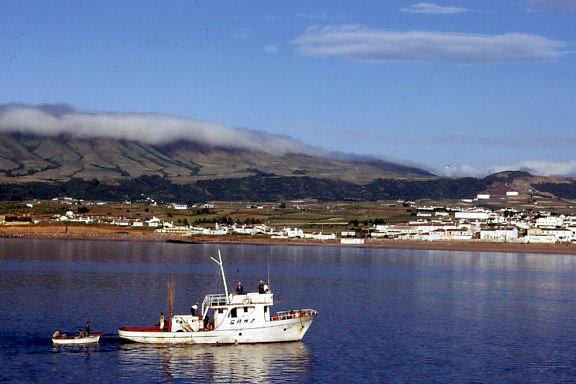
While serving with the U.S. Navy in 1969, I was fortunate to have been able to do a little sightseeing on the Azores. Our ship was part of the operations unit conducting observations of the sunken submarine USS Scorpion (SSN-589). A year earlier the Scorpion had gone down in the mid-Atlantic, and we were the support ship for the bathyscaphe Trieste (DSV-1), which was capable of diving to the great depth in which the Scorpion had sunk and broken into three pieces. Our job was to photograph the wreckage and try to discover any evidence that would help to understand the reason for the crash. If you would like to learn more about the loss of the Scorpion I recommend reading "Silent Steel: The Mysterious Death of the Nuclear Attack Sub USS Scorpion" by Stephen Johnson. I've spoken with the author on several occasions, and of all the Scorpion books, I believe that his is the best.
But this post isn't about the Scorpion Operation, it is about the R&R that we had while refitting in the Azores, both before and after our work at the Scorpion site. I don't know what this autonomous region of Portugal is like today, but in 1969 it was a fantastic, and very beautiful place to visit. Here is a link to the complete collection of my 1969 photos from the Azores, but just to give you a few of my impressions, the following are a few of my favorites.
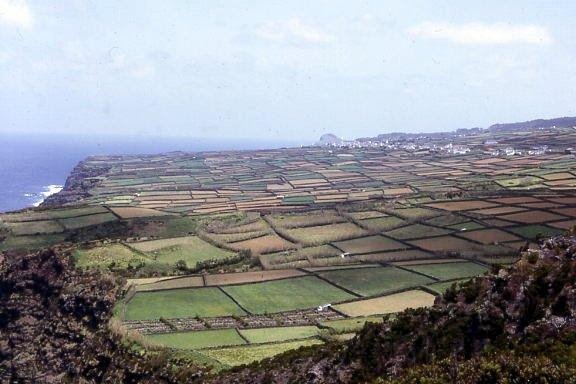
The Azores are a mountainous series of islands lying over 800 miles off the coast of Portugal. In a way, they reminded me of Ireland, with all of their small farming plots divided by stone fences. And at the time we are there many lovely shades of green were to be seen.
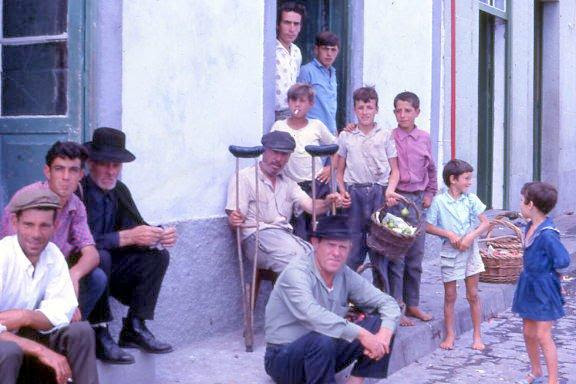
What I remember best about my time there were the interesting people that we met. Although I knew no Portuguese, and most of the people that I met didn't speak English, we nonetheless got along fine and were quite willing for me to take their picture. Of course, it is probably best that I didn't know their language. Judging from the looks on the faces in the photo above I would guess that they thought I was rather goofy. From what we were told, the only American's that they usually encountered were pilots who were on short turn-arounds on their Atlantic submarine patrols.
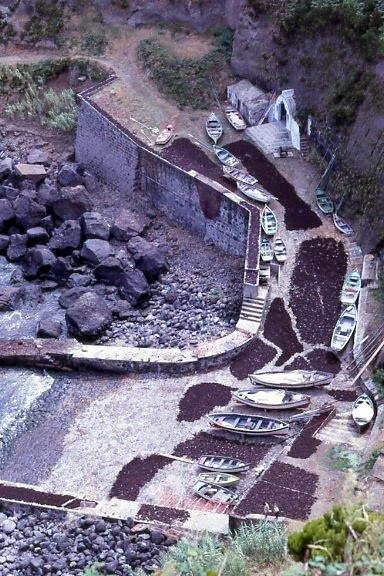
In 1969 their were still annual celebrations for Whalers Week, where their long tradition of hunting whales in open boats was celebrated. At the time, there still were a few whale hunts that took place, but it was no longer an active industry. Farming and fishing seemed to be the main lines of work for most people. As a person who loves the sea, prowling around the waterfront was my favorite pastime when I didn't have duty on my ship.
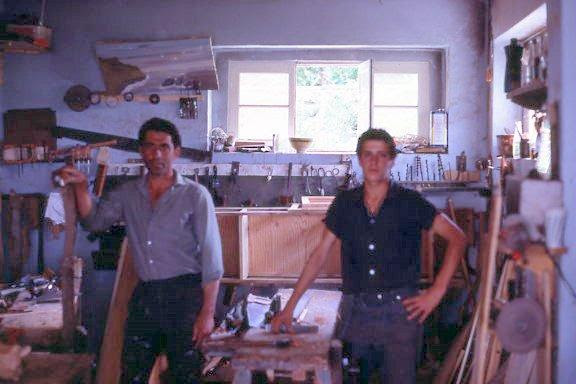
The photo above is of the two blacksmiths I found that still made whaling harpoons and lances. They made a set for me, and they are here by my desk as I type this post.
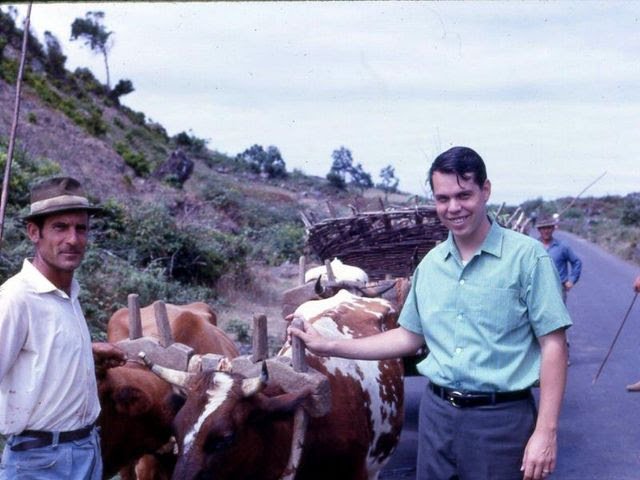
In our travels around two of the islands we saw very few automobiles and only a handful of trucks. Most of the transport at the time was done by animals who pulled wagons of all shapes and sizes.
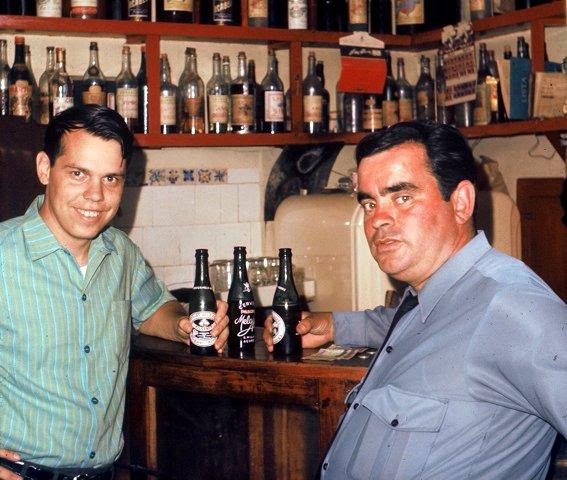
A friend and I hired a local man to drive us around in his car. I'm no longer sure where we met him, but over a few days, and a few drinks, we became good friends. One night his wife cooked a magnificent dinner for us, and I forever became a fan of Portuguese cooking.
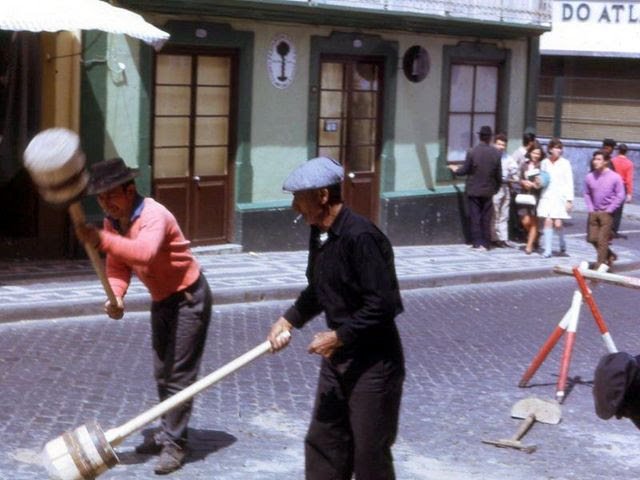
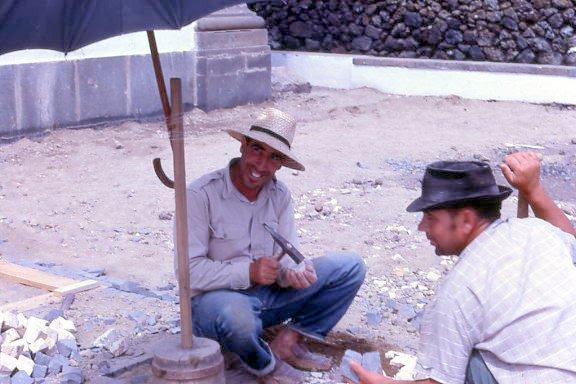
To give you an idea of where the Azores were in technological time, here are two pictures of some men doing road repairs. Note the lack of any kind of power tools. I don't know when jack hammers became prevalent in the U.S., but I'm sure that it was a long time ago. Talking with these workers gave me a better idea of what some of my ancestors had gone through . . . and it was REAL, not a Disney invention.
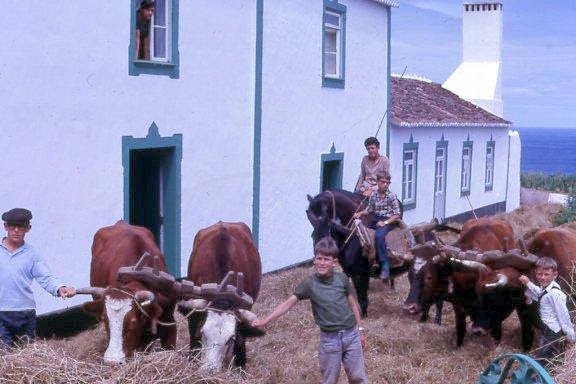
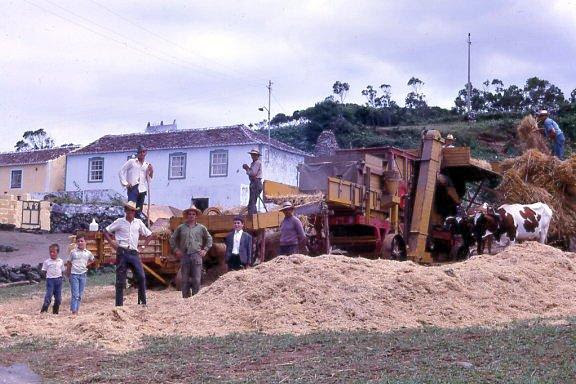
When we came upon the scene above, at first we couldn't figure out what was going on. It seemed like these boys were just leading some animals around and around a small area for the fun of going in circles. Then we were told that they were threshing freshly harvested grain. They didn't have very many mechanical threshing machines, like the ones my grandfather used back in the 1930s. So they drove the animals around the pile of wheat until they could rake off the chaff and pile up the grain for market.
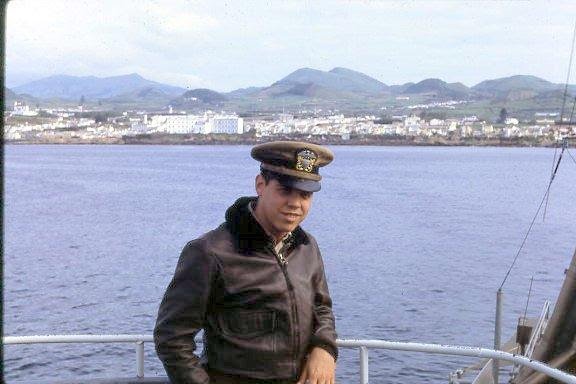
I was just a young, wise-ass naval officer back then. I still have that jacket, but it no longer fits. I'm hoping that my grandson will want it one day. After the above picture was taken we still had to tow the Trieste in her floating dry dock back home, max speed 5 knots. On the way we had to dodge a hurricane, cross the Caribbean, transit the Panama Canal, and slowly make our way north to San Diego. In all, we traveled over 14,000 nautical miles on what must have been the slowest cruise in Navy history.!
Sounds like an interesting adventure! I am a fan of old photos always so really enjoyed looking through these.
I am following your blog too
I just visited your blog and saw the post about Southern Spain. Until he died, my brother lived in that region. Your post brought back some fond memories of my visits there.